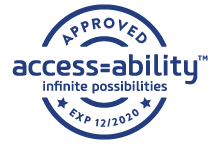by Daniel Parker, RDPFS Contributor:
The Partnership on Employment and Accessible Technology (PEAT), funded by the U.S. Department of Labor’s Office of Disability Employment Policy (ODEP), has created an AI and Inclusive Hiring Framework, designed to help make “artificial intelligence-powered hiring technology more inclusive for disabled job seekers.” According to PEAT, “Artificial intelligence (AI) powers many recruiting and hiring tools in today’s workplaces. It helps carry out job tasks, process large datasets, and even support accessibility, allowing employers to handle multiple hiring duties faster. But using AI hiring technology can introduce both benefits and risks—for employers, job seekers, and workers, including people with disabilities. For example, AI hiring technology can pose a significant risk of discrimination and bias against disabled job seekers and workers.” Because the AI hiring algorithms favor characteristics of people already in the workforce, and those with disabilities are underemployed, they can be disqualified without any consideration. This framework attempts to mitigate such risks by organizing solutions into ten “Focus Areas,” which can be implemented consecutively or concurrently and in any order. Focus areas include identifying legal requirements, establishing staff roles, inventorying technology, working with vendors, assessing impacts, providing accommodations, using explainable AI, ensuring human oversight, managing incidents, and monitoring regularly. Also interwoven throughout the Framework are five “key themes,” which are prominent in different Focus Areas. These consist of the “impact of procuring AI hiring technology,” “advertising employment opportunities and recruiting inclusively,” “providing reasonable accommodations to job seekers,” “making offers and selecting candidates responsibly,” and “incorporating human assistance and minimizing risk.” As AI hiring technology is fairly new and can carry a substantial risk of systemic bias against people with disabilities in the hiring process, it is hoped that this Framework will provide a structured method for organizations to implement more inclusive AI solutions that will benefit the organization, job-seekers, and current employees alike. More information can be found at the links above.

